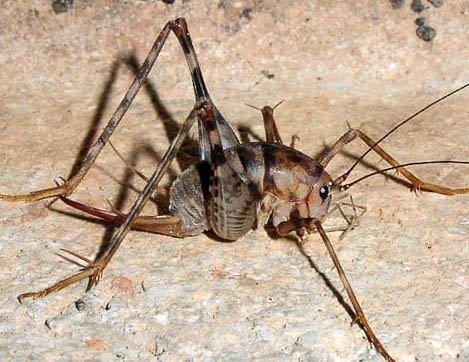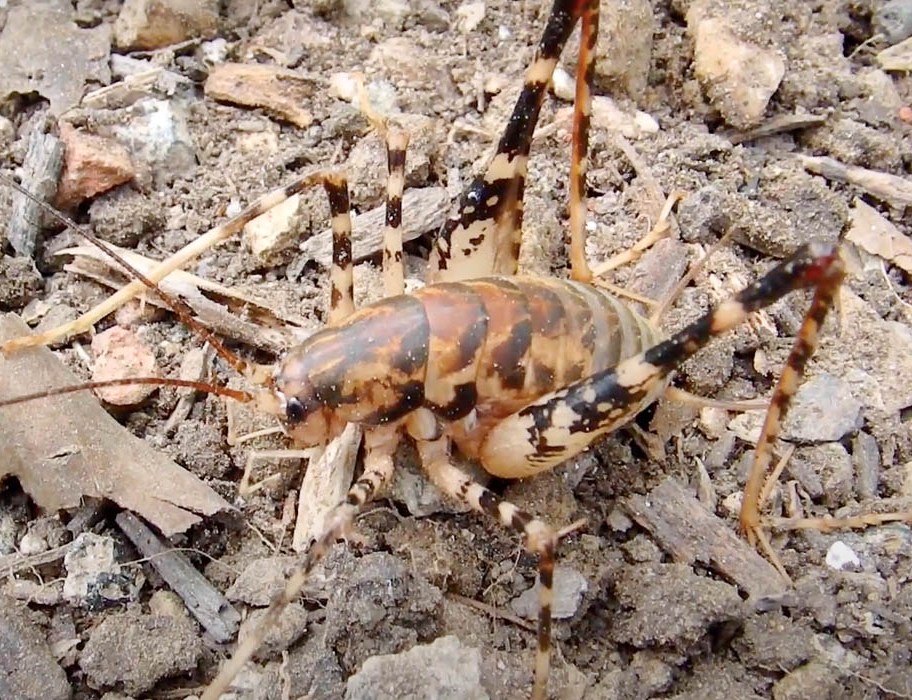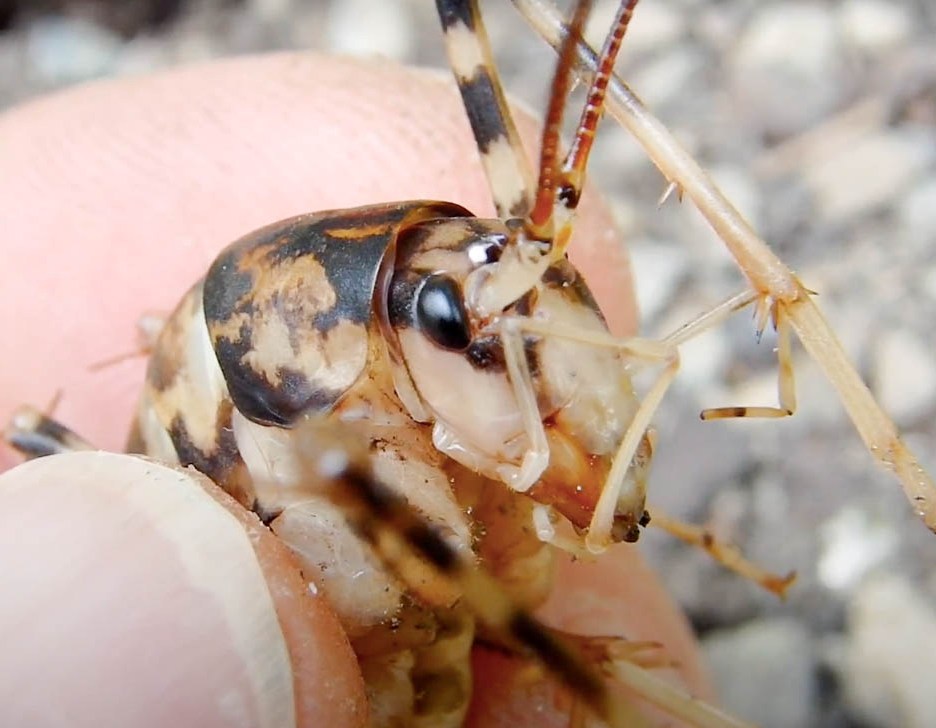About Camel Crickets
Overview
Camel crickets are part of the cricket family alongside spider crickets or ‘sprickets’, sand threaders, and cave crickets. Camel crickets belong to the family rhaphidophoridae of the order orthoptera, which is under the phylum arthropoda. The six-legged creatures are flightless, carrying very long antennae and legs. There are over 1,100 species in the rhaphidophoridae family, and they are all nocturnal dwellers.
Camel crickets live in damp, cool places surrounded by lots of shade. Unlike other species of crickets that chirp at night, the camel cricket does not as it lacks the sound-producing organ. Being wingless insects, the camel cricket ultimately relies on its long hind legs to leap out of impending danger.
Appearance
The camel cricket gets its name from its camel-like appearance. Its humpback body structure has six legs attached to the thorax, with the hind legs being as long as its entire body. These 1/2-inch-long insects are light to dark brown with dark bands scattered across its body.
The camel cricket’s antenna is longer than its entire body, which it uses to feel around at night. Camel crickets are nocturnal insects, so they rely heavily on their sense of touch to navigate dark places and evade predators.
Camel crickets undergo incomplete metamorphosis, with only three stages in their life cycle; egg, nymph, and adult. They mate in spring, with the female laying her eggs in the soil. Unlike the boxelder bug, where only the adults survive overwintering, nymph and adult camel crickets overwinter.
Behavior
Camel crickets, alongside most other cricket species, are nocturnal creatures, spending the day hiding in moist places while reserving nighttime for other activities. Camel crickets feed on cardboard, clothes, wood, carpet, fungi, other smaller insects, and on rare occasions, other camel crickets.
Camel crickets use their powerful hind legs to escape any potential threat. The force generated propels them several feet into the air, much like a flea.

Habitat
Camel crickets live outdoors, typically living under rocks, leaf litter, mulch, woodpiles, and debris. During the day, they hide in moist and cool environments, and at night, they come out to feed. However, camel crickets will crawl into buildings during dry and hot weather conditions to find cooler areas. You will find them in damp basements, storage rooms, attics, garages, and utility rooms.
Damages They Cause
Camel crickets do not cause any major physical destruction. However, if they make it into your home, they will munch on wood, clothes, fabrics, carpet, and even cardboard. Their lack of sound-making organs means that they will not disturb you while you sleep. Camel crickets are not poisonous, and they do not carry any disease, so they pose no health risk problems.
Infestation Signs
Crickets are usually not common in homes and buildings. Camel crickets are occasional invaders that make their way into homes or building when their lives are on the line. Camel crickets will overwinter in homes to avoid the harsh weather condition but will otherwise remain outdoors all year round.

They have very little signs to show possible infestation. Since camel crickets are nocturnal and do not produce any sound, the likelihood of spotting one is very low. The best way to find out if you have a possible infestation is to check your clothes, fabrics, carpets, and furniture. If you notice a bite mark on them, then there might be something lurking around your home.
Damage to Utilities
The best way to get rid of camel crickets, as well as other pests, is to prevent them from entering your home. Family-friendly pesticides will work well against camel crickets, and you can purchase them from your local store.
If you plan to use a non-chemical approach, the best bet is to make the place uncomfortable for them. Install dehumidifiers or air conditioners around your home to drive them out. Make sure your house has proper ventilation and is free of clutter and hiding spaces.
Carry out routine building maintenance to ensure that no critter enters your home. Seal off cracks and crevices around vents, doors, and windows using caulk or any suitable material.

You should also make it a habit to carry out routine landscaping. Mow your lawn, trim overhanging tree branches, clean up leaf litter and other debris. You can also contact a pest control company to assist. They will assign a professional to inspect your home and provide a unique treatment plan to your environment.
